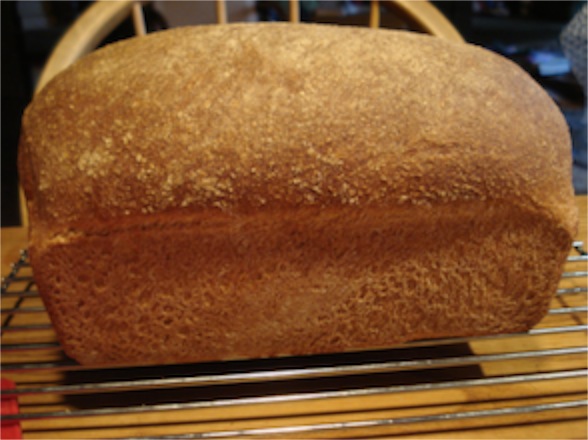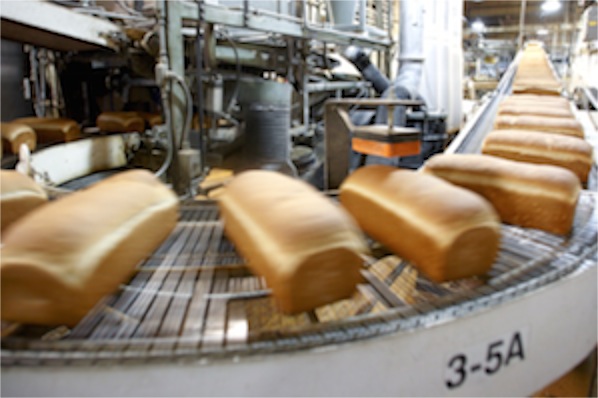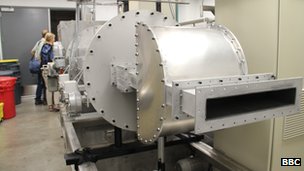Bread
30/11/12 05:20

I know how to bake bread and I know the recipe for basic bread that my mother used. It is one of those things that doesn’t need to be written down. Once you know it, you don’t really need to measure the flour. You use the one-cup measure more as a scoop than as a precise measuring tool. Our recipe makes three loaves of bread or three-dozen rolls.
I have three younger brothers and there were days, especially as I got into my teenage years where food disappeared from our house at a pretty rapid rate. It wasn’t being stolen, it was being consumed. In those days, mom probably would have had to bake every day to keep up with the demand. She didn’t, so we had bakery bread to supplement her home baked bread. I remember watching one morning as an entire loaf of white bead was transformed into French toast. I got one of the heels of the loaf that day. I still prefer the heels.

I know what factory bread looks like, smells like and tastes like. It didn’t make me lose my appetite for bread. But I have always preferred home-baked bread.
These days the bakeries in the stores make a lot of different breads including “artisan” breads that are closer to home baked. The process is still done on a large scale with attention to consistency, so it isn’t hard to taste the difference between bakery bread and home baked.
But we live in a time of incredible abundance and choice. The supermarket where we often pick up food on our way home from work has an entire aisle of bread with dozens and dozens of choices. Many of the “choices” don’t represent real differences. I know that because when I worked in the factory bakery, we put 18 different bags on the same bread. “Wonder Bread” is the same as the store brands, even the discount brands. It just has a different bag around the loaf.
In the midst of such abundance, we have grown careless. I read an online article that claimed that 40% of the food that American buy is never eaten. It is wasted. The same article said that a slightly smaller percentage, about one-third, of the bread purchased is thrown away. The main reason bread is thrown away is that it develops mold. The same thing that causes bread to rise and have its wonderful texture and flavor – tiny spores, leads to its deterioration. And bread mold doesn’t smell or taste wonderful. I’m quick to toss any bread that gets moldy at our house.
Commercial bakers put different chemical preservatives into bread to slow the growth of mold. I don’t recommend the experiment. It is wasteful. But if you leave a slice of home-baked bread and a slice of commercial bread out for the same amount of time, mold will form on the home-baked slice first. To me it seems unnatural for bread to go so long before developing bread. At our house home-baked bread doesn’t hang around long enough to develop mold. It takes more than a week, nearly ten days, for bread to develop mold in our dry climate around here. The bread would get stale before it got moldy. And we like to eat bread around here.
 Still, a team at Texas Tech University in Lubbock, have developed a large microwave device that kills all of the mold spores in bread. Bread treated with the device has been shown to last more than 60 days without developing mold. The machine was developed for killing bacteria in meat to make it last longer and the discovery that it works on bread was a sideline to the main research that is being conducted at the university.
Still, a team at Texas Tech University in Lubbock, have developed a large microwave device that kills all of the mold spores in bread. Bread treated with the device has been shown to last more than 60 days without developing mold. The machine was developed for killing bacteria in meat to make it last longer and the discovery that it works on bread was a sideline to the main research that is being conducted at the university.Still, it is a technology worth considering. If commercial bakers didn’t have to add preservatives to the bread it would taste better. And it would be better nutrition for those who eat it as well. The recipes for commercial bread not only include chemical preservatives, but they also include other ingredients to mask the flavor of those preservatives. Remove all of those things from the ingredients list and you get bread that tastes better and is better nutrition for those who eat it. So, we will probably see the use of the special microwave machine by commercial bakers before long.
I really don’t need bread that lasts 60 days, however. It doesn’t take much planning or foresight to eat the bread before it goes bad. Careless and inattention account for more food waste than the shelf life of the products that we eat. The solution to our nation’s excessive food waste is more likely to lie in education than in more technology. I doubt that the use of the microwave technology will have much impact on the amount of food wasted.
If you really want to cut down on food waste, just have four teenage boys for dinner every night. If you don’t have boys of your own, you could always invite in the neighbors’ kids. It solves the problem of leftovers.